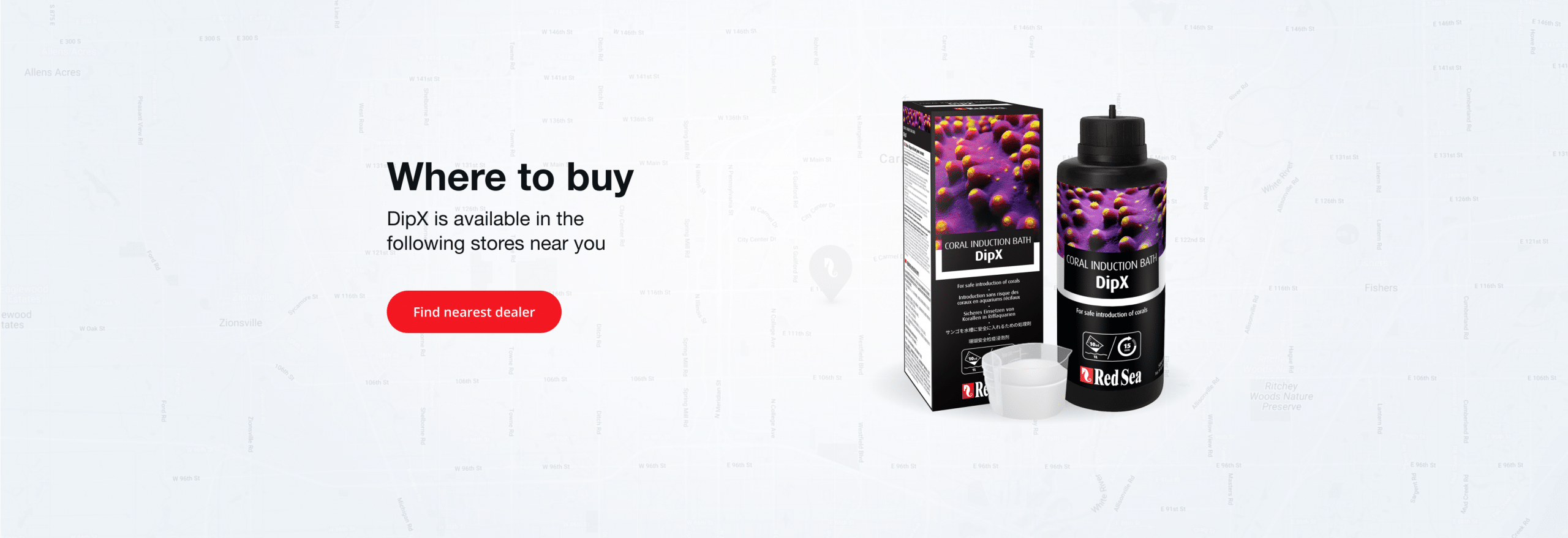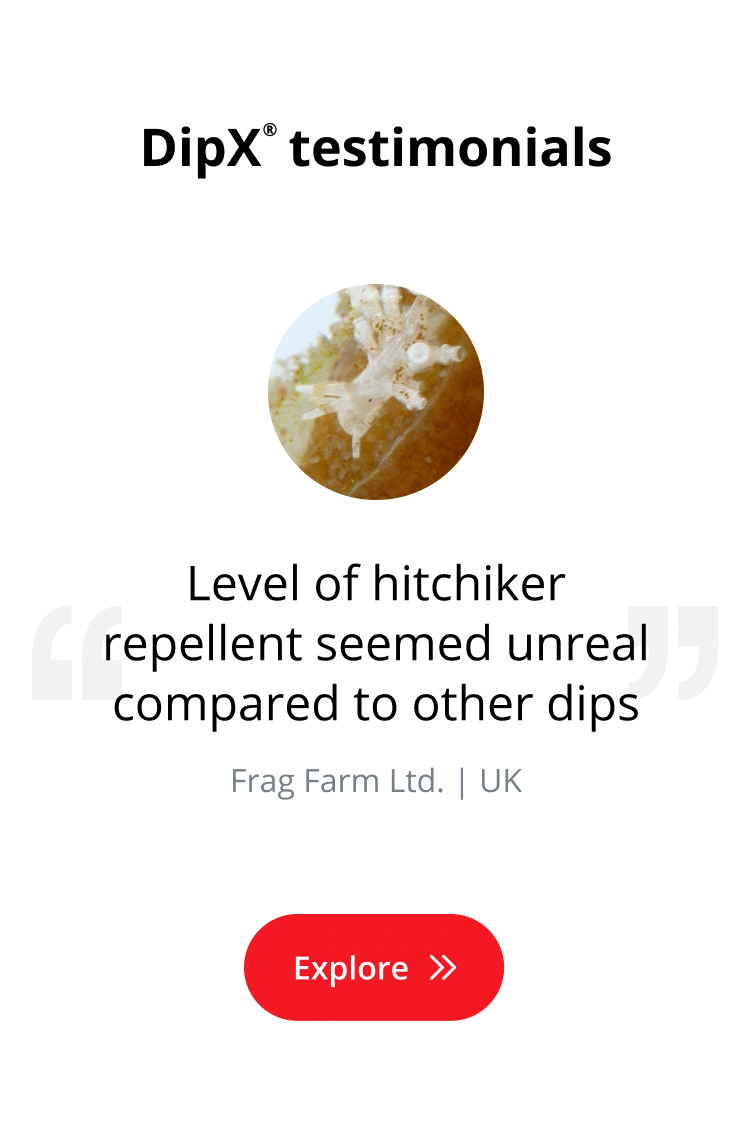DipX®
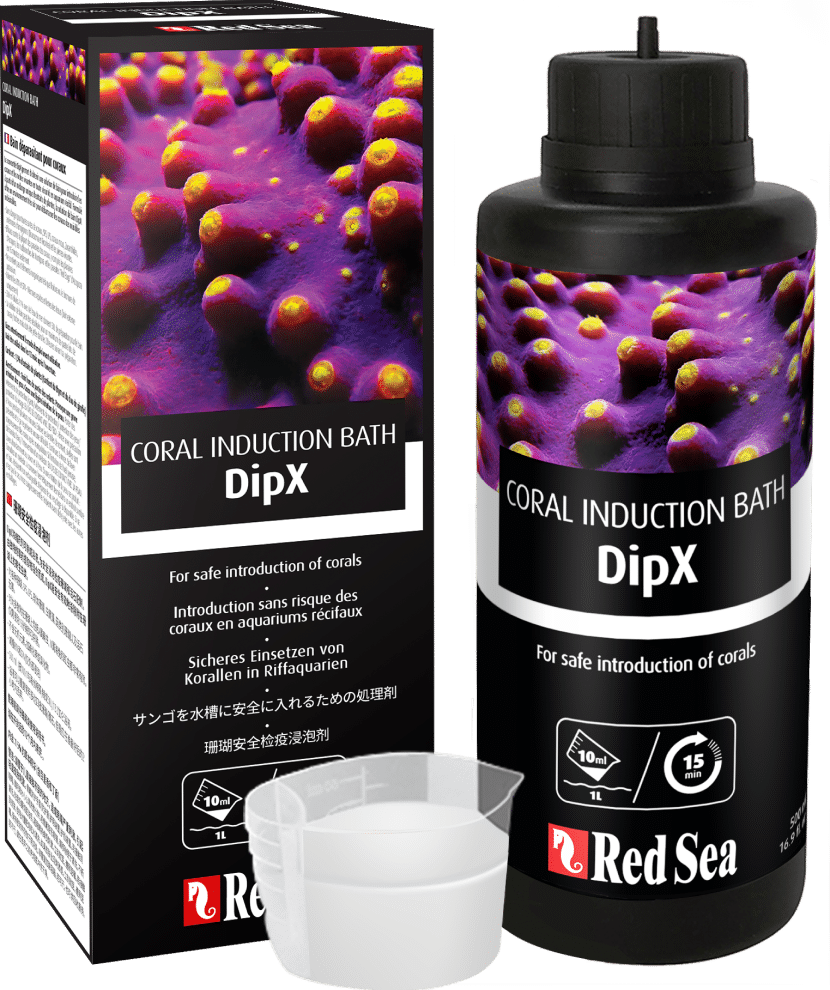
DipX is a highly effective dip for safely introducing new corals and live rocks to your aquarium.
A simple 15-minute bath in DipX before placing a new coral in the aquarium will drive away unwanted “hitchhikers”, thereby maintaining the safety of your reef.
New corals often come with unwanted “hitchhikers” hidden deep inside the corals’ crevices. These various tiny creatures are usually invisible to the naked eye, and once in the aquarium, they can migrate to other corals and damage your delicate reef eco-system.
Over the years, reef hobbyists have used generic baths solutions such as fresh water, Iodine, and even household disinfectants, all of which repel some of the hitchhikers, but not all of them.
For the past few years, we have been cultivating tanks with infested corals and comparing a wide range of commercially available dips and other repelling ingredients, examining both their effectiveness and their overall safety for the corals.
The result is DipX – a unique blend of essential oils, without inorganic disinfectants. Our tests have shown that DipX is completely safe for all kinds of corals and more effective than any other solution we tested.
Corals that were bathed in DipX still repelled unwanted “hitchhikers”, even though they were previously dipped in other solutions On the other hand, corals that were dipped in other solutions after they were bathed in DipX did not repel anything.

Features
- Safe for all kinds of corals: SPS, LPS and Soft corals, Zoanthids, mushroom anemones (Discosoma and Ricordea) and live rocks.
- Effectively drives away Acropora eating flatworm, Montipora eating nudibranch, Acropora Red Bug and other coral “hitchhikers”.
- Slows down RTN and STN (external bath only).
- Free of inorganic elements such as potassium iodide or bromide.
- Easy to use, reliable and cost-effective
essential oils
Test results of DipX compared to other solutions*

Why do corals have hitchhikers
In nature, numerous species of tiny coral-associated invertebrates make their homes on corals and the reef rocks and are referred to collectively as “opportunistic dwellers”. The most common groups of these opportunistic dwellers include crustaceans, helminths (worms), echinoderms, nudibranchs, and snails.
In most cases, the dweller benefits from the host without damaging it, and in others (such as Trapeziidae crabs in Acropora) both host and dweller benefit from the relationship. There are however, some dwellers that cause damage to their coral host by feeding on it. In their natural habitat, these opportunistic dwellers are relatively few in number due to the scarcity of nutrients as well as having natural predators.
When corals are transferred from one environment to another, these opportunistic dwellers remain with their coral hosts, becoming incidental hitchhikers.
Suspecting your coral has a Hitchhiker? see the Hitchhikers identification guide
Why corals need to be dipped
There are no viable methods for removing specific opportunistic dwellers from an established reef aquarium.
While not all of the incidental hitchhikers are necessarily bad for an artificial reef, some of them quickly become unwelcome guests and therefore it is highly recommended to go with a “better safe than sorry” policy and try to prevent them from getting in. If, however they are already in the system, affected corals and rocks will need to be removed and dealt with one at a time.
Carefully inspecting corals should be part of the regular husbandry routine for a reef aquarium so that any signs of soft tissue damage or discoloration can be identified and investigated as soon as possible. Early detection of the presence of hitchhikers is the most effective way of preventing an uncontrolled outbreak that can potentially harm the entire reef.
Notes for use
- Pour DipX into an empty container. Verify the container is both clean and dry beforehand.
- Use 10 ml of DipX (diluted 1:100 with aquarium water) to prepare 1L/0.26gallons of bath mix.
- Place your new coral or live rock in the container for no more than 15 minutes.
- Bath solution can be reused for up to four batches of corals/rocks but should be discarded within 2 hours from preparation.
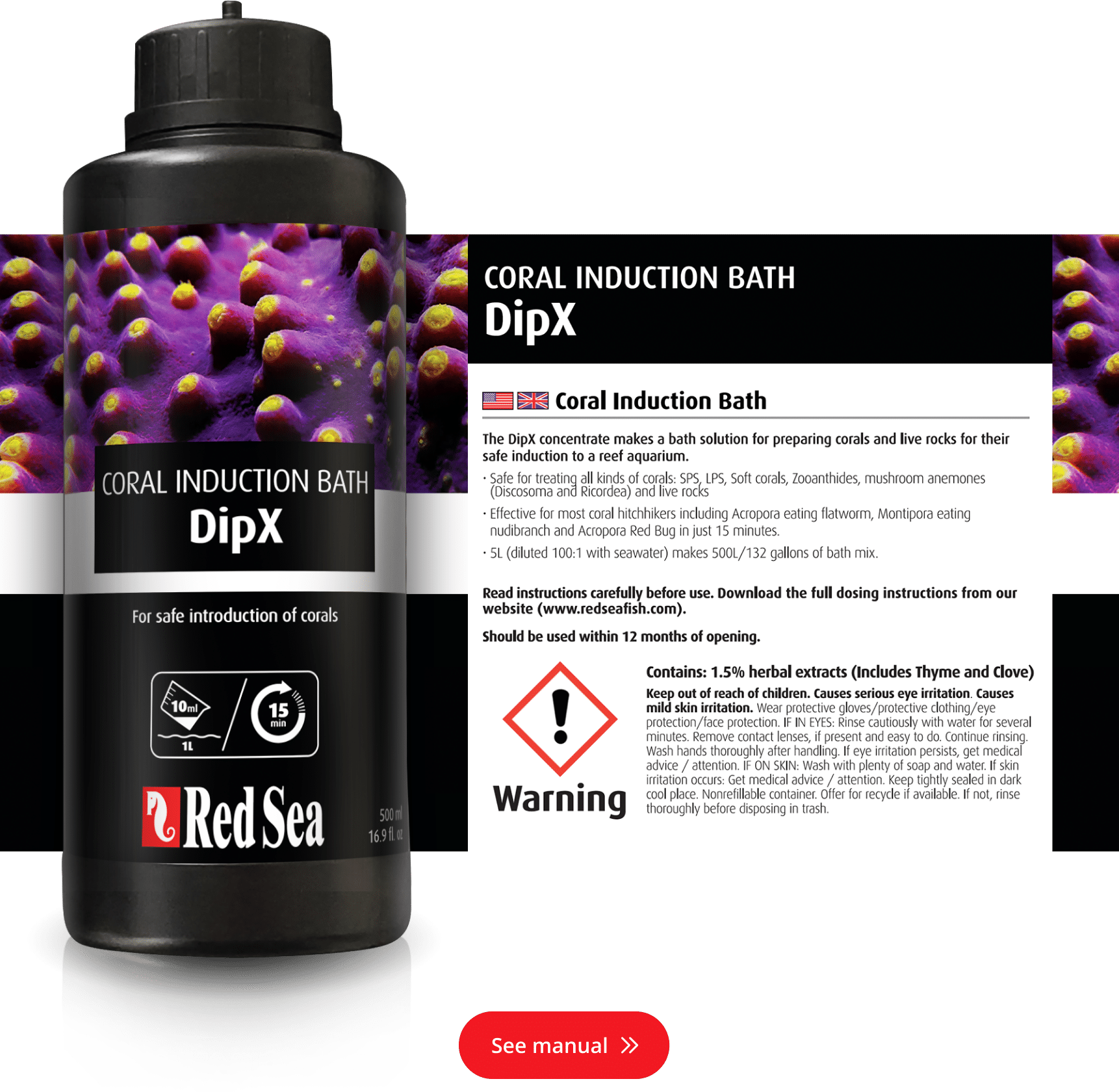
Package size/volume
- 100 ml (3.4 fl. Oz.) introductory
- 250 ml (8.5 fl. Oz.)
- 500 ml (16.9 fl. Oz.)
- 5 L (1.32 gal.)
